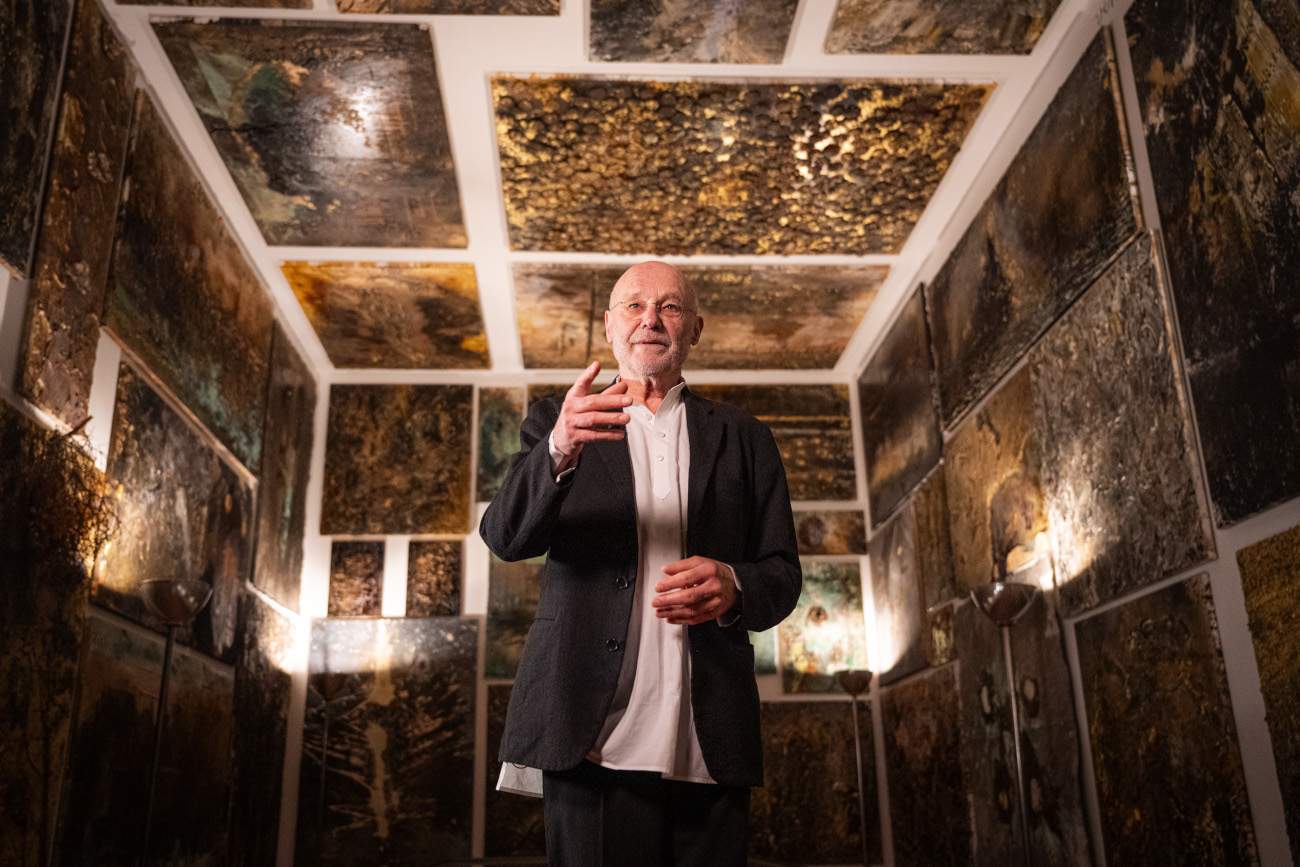Anselm Kiefer (Donaueschingen, 1945) will be the star of Palazzo Strozzi ’s major exhibition in Florence for 2024: the appointment between the rooms of the Renaissance palace is from March 22 to July 28, 2024. Kiefer is known for his striking works that through painting, sculpture and installation investigate the themes of memory, myth, war and existence: Palazzo Strozzi will present a path through historical works and new productions, in an original dialogue with Renaissance architecture.
Every artistic production of Anselm Kiefer expresses the rejection of the limit, in the monumentality and power of materiality, as well as in the infinite wealth of resources with which he probes the depths of memory and the past. Kiefer a made his debut on the German art scene in the late 1960s with works that, among the first, marked a reflection on the history of World War II and Germany’s emotional and cultural legacy. From here began an artistic journey in which myth, religion, mysticism, poetry, and philosophy combine and mingle.
The exhibition will be entitled Fallen Angels and will be curated by Arturo Galansino: the purpose will be to restore the complexity of Kiefer’s art, showing the intertwining of figure and abstraction, nature and artificiality, creation and destruction, in a project that involves viewers in both the physical and conceptual space of his works.
Born in 1945 in Donaueschingen, Germany, Anselm Kiefer, who currently lives and works in Paris, is one of today’s most important and versatile artists. His artistic practice spans diverse media, including painting, sculpture, photography, woodcuts, artist’s books, installations and architecture. Kiefer studied law and Romance languages before devoting himself to art studies at the academies of Freiburg and Karlsruhe. As a young artist he came into contact with Joseph Beuys and participated in his Save the Woods action in 1971.
With his early works he addressed the history of the Third Reich and grappled with Germany’s postwar identity as a means of breaking the silence about the recent past. Through parodying the Nazi salute or visually quoting and deconstructing National Socialist architecture and Germanic myths, Kiefer explored his own identity and culture.
From 1971 until moving to France in 1992, Kiefer worked in the Odenwald, Germany. During this period he began incorporating now-emblematic materials and techniques into his work, such as lead, straw, plants, textiles and woodcuts, along with themes such as Wagner’s The Ring of the Nibelung, the poetry of Paul Celan and Ingeborg Bachmann, as well as biblical references and Jewish mysticism. Kiefer has gained wide international attention since he and Georg Baselitz represented West Germany at the 39th. Venice Biennale in 1980.
The mid-1990s marked a shift in his work; extensive travels to India, Asia, America and North Africa inspired an interest in the exchange of thought between Eastern and Western worlds, and structures reminiscent of Mesopotamian architecture entered his oeuvre. Hints of the landscapes of southern France are evident, with representations of constellations or the inclusion of plants and sunflower seeds.
Kiefer, an avid reader, enriches his works with layered literary and poetic references. These associations are not necessarily fixed or literal, but overlap in an interconnected fabric of significat and interest in books, both as text and object, reverberates in his work. Since the beginning of his career, artist’s books have formed a significant part of his output.
In addition to making paintings, sculptures, books and photographs, Anselm Kiefer has intervened in various places. After transforming an old brick factory in Höpfingen, Germany, into a studio, he created installations and sculptures that became part of the place itself. A few years after moving to Barjac, France, Kiefer again transformed the property around his studio by excavating to create a network of underground tunnels and crypts connected to art installations.
The studio is now part of the Eschaton-Anselm Kiefer Foundation, open to the public on a regular basis. The establishment of the foundation in 2022 coincided with Kiefer’s return to Venice, where, in parallel with the Biennale, he included in the Doge’s Palace a series of paintings inspired by the writings of Italian philosopher Andrea Emo
 |
| Anselm Kiefer will be the star of Palazzo Strozzi's major 2024 exhibition |
Warning: the translation into English of the original Italian article was created using automatic tools. We undertake to review all articles, but we do not guarantee the total absence of inaccuracies in the translation due to the program. You can find the original by clicking on the ITA button. If you find any mistake,please contact us.